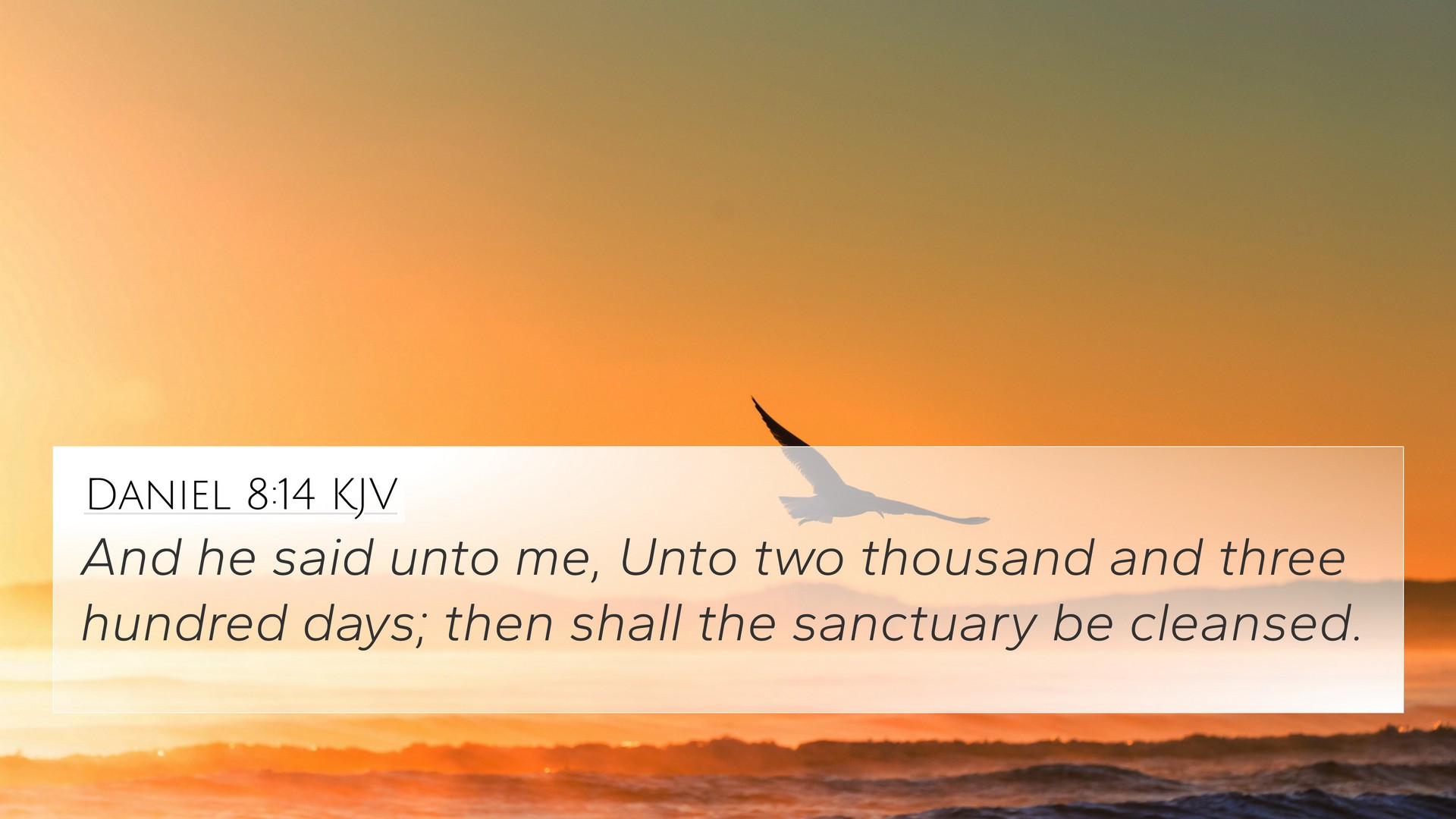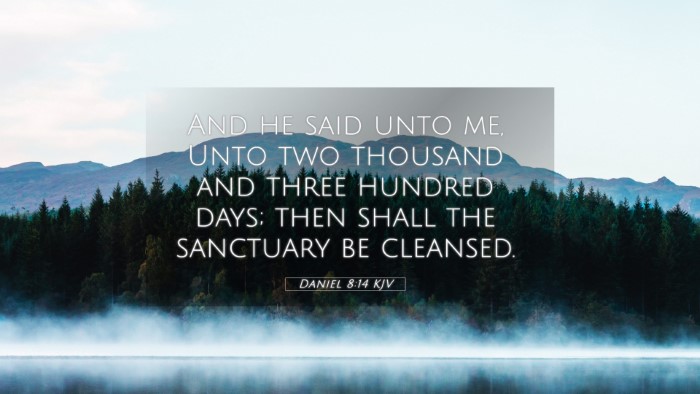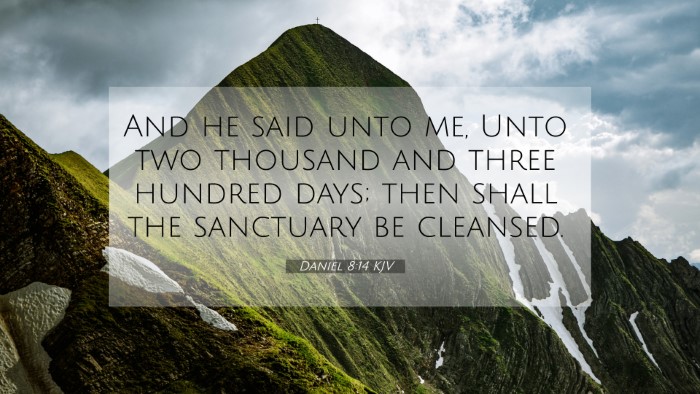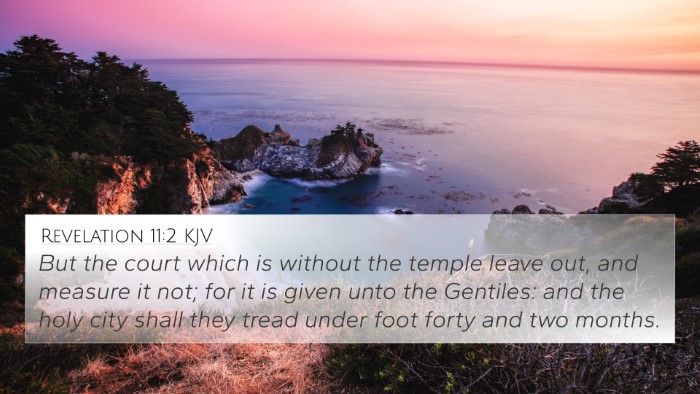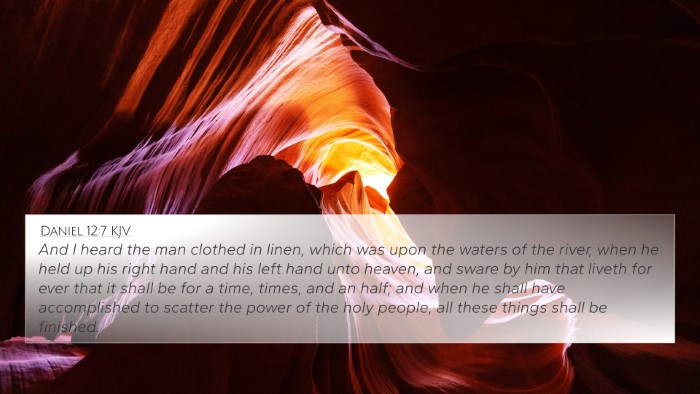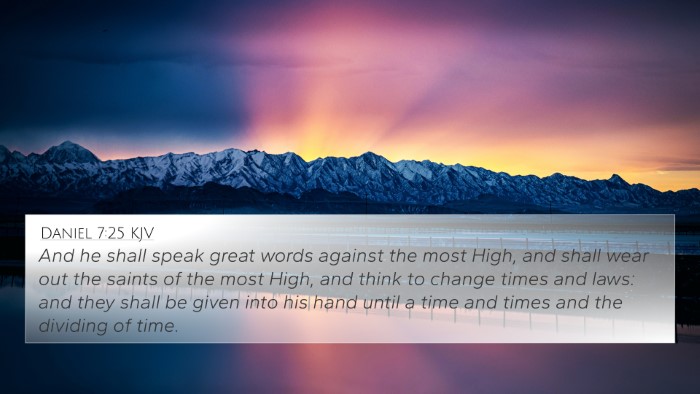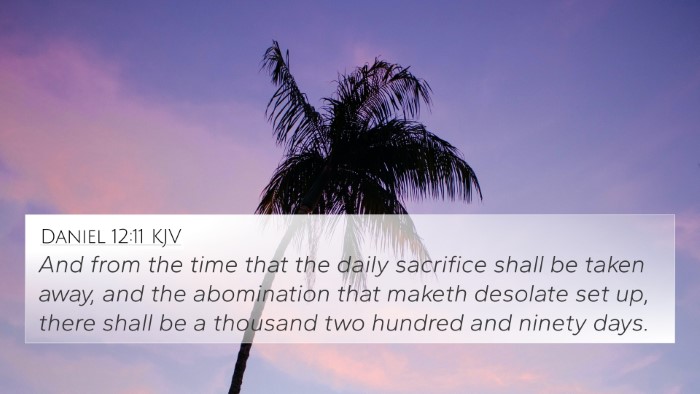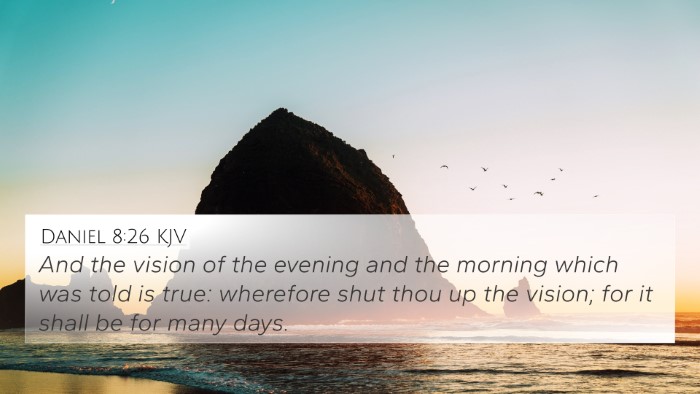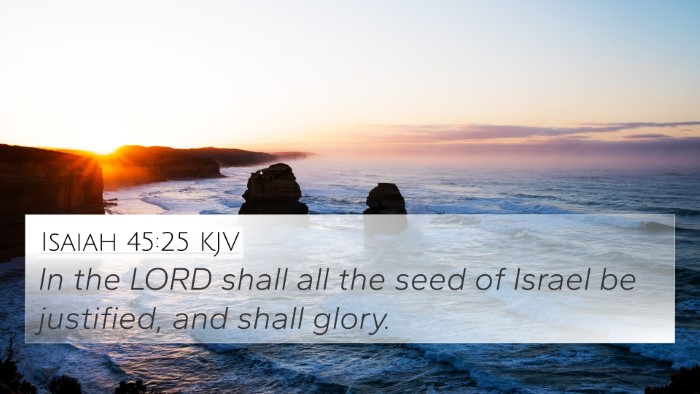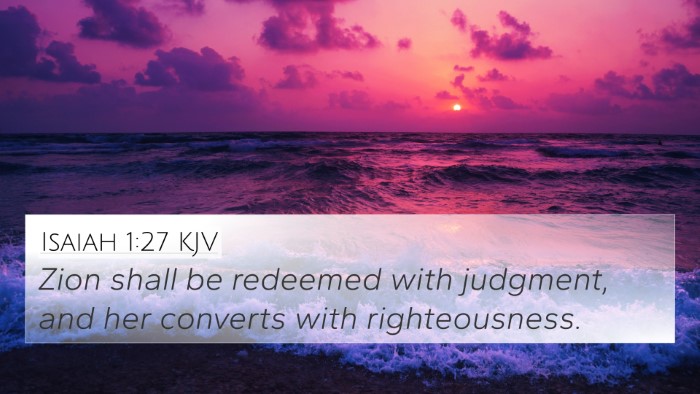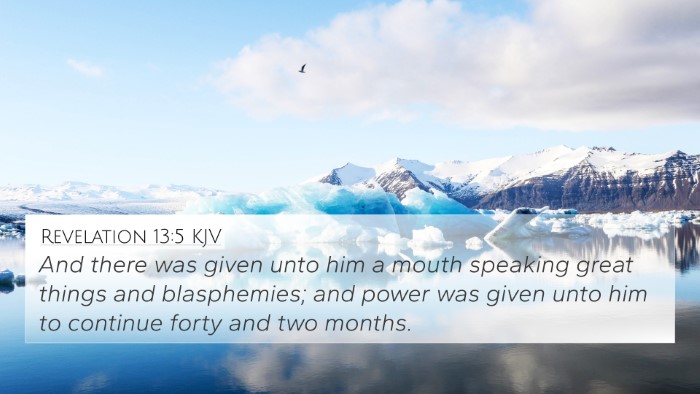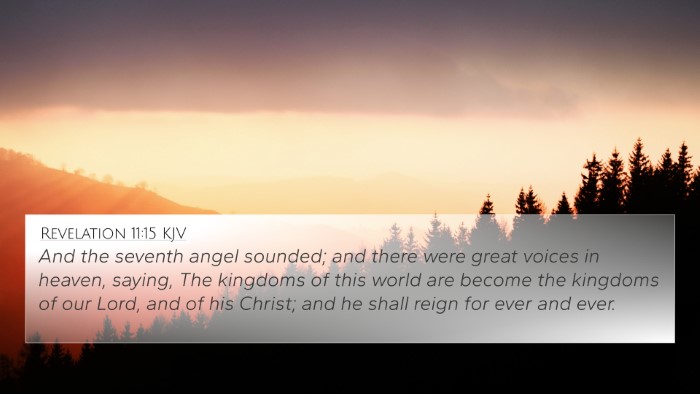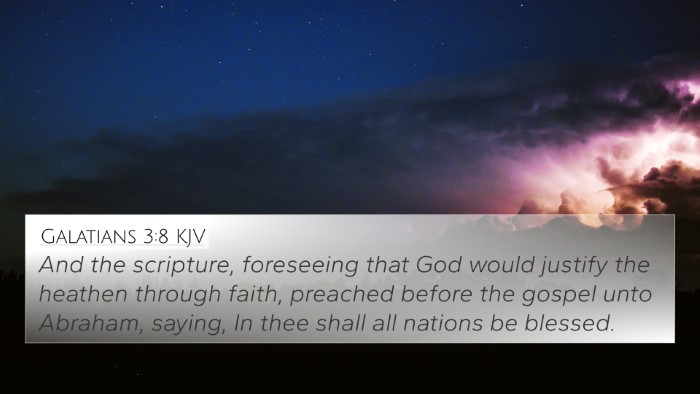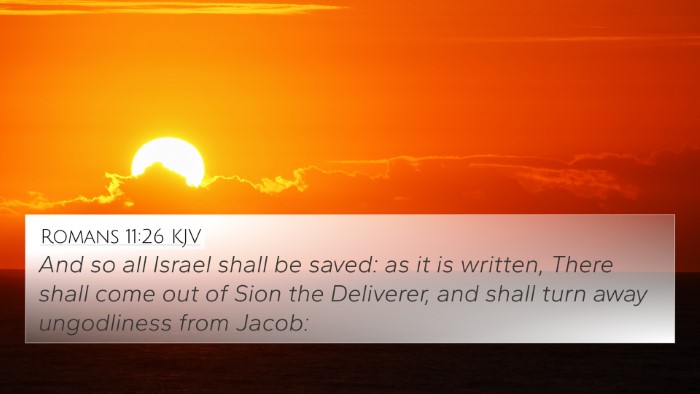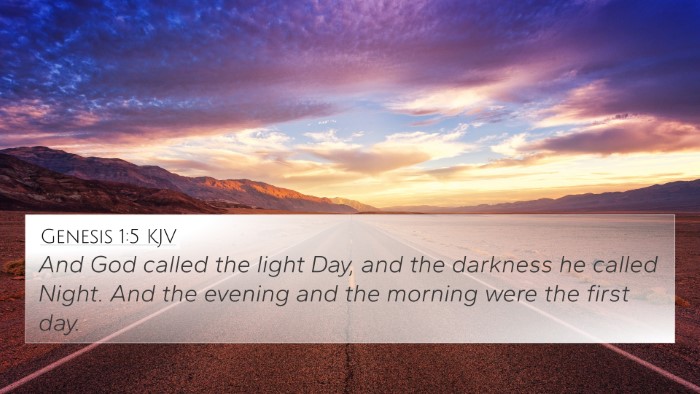Understanding Daniel 8:14
Daniel 8:14 states: "And he said unto me, Unto two thousand and three hundred days; then shall the sanctuary be cleansed." This verse is significant in both its prophetic implications and its theological depth. The interpretations gather various insights from public domain commentaries including those by Matthew Henry, Albert Barnes, and Adam Clarke.
Contextual Background
This verse occurs within a vision experienced by Daniel, which details the rise and fall of empires and the significance of the sacred sanctuary. The timeframe of "two thousand and three hundred days" has spurred significant discussion among scholars regarding its meaning and implications for the people of Israel and the future.
Commentary Insights
Matthew Henry's Commentary: Henry emphasizes the notion of hope and restoration infused within this prophecy. The "cleansing of the sanctuary" signifies a future time when God's presence will be restored among His people, possibly alluding to the Messiah’s redemptive work. He highlights the cyclical themes of judgment and restoration throughout biblical history.
Albert Barnes' Notes: Barnes provides an analytical perspective, suggesting that the mention of "two thousand and three hundred days" may not simply refer to literal days but could symbolize a more expansive prophetic timeframe. He posits that this cleansing heralds a dawn of renewed worship and fidelity in the relationship between God and His people after a period of defilement, connecting it to the broader themes of Jewish prophetic literature.
Adam Clarke's Commentary: Clarke delves into the details of the time period mentioned, proposing various interpretations, including a possible connection to the Maccabean revolt against oppressive regimes and the subsequent rededication of the temple. He underscores the importance of understanding the historical context and how these prophecies were fulfilled in the great narrative of redemptive history.
Comparative Bible Verse Analysis
To deepen our understanding of Daniel 8:14, it's beneficial to explore cross-references that elucidate its themes and messages:
- Leviticus 16:30 - Discusses the Day of Atonement, where sin is cleansed from the sanctuary.
- Hebrews 9:26 - Speaks of Christ appearing to put away sin by the sacrifice of Himself.
- Matthew 27:51 - Describes the tearing of the temple veil at Jesus' death, symbolizing access to God.
- 1 John 1:9 - Promises that if we confess our sins, God is faithful to forgive and cleanse us.
- Revelation 11:19 - Describes the heavenly temple being opened, linking back to the cleansing of the earthly sanctuary.
- Isaiah 52:1 - Calls for the awakening of Zion to put on strength, which parallels themes of restoration.
- Malachi 3:1 - Foretells the coming of the messenger who will prepare the way and purify the offerings.
Thematic Bible Verse Connections
The themes encapsulated in Daniel 8:14 resonate throughout Scripture, creating a rich tapestry of connections between various scriptures. For example:
- The sanctuary as a central theme of God's dwelling among His people is reiterated in the Tabernacle (Exodus 25:8) and fulfilled in Christ (John 1:14).
- The cleansing motif relates deeply to the concept of atonement that runs from the right sacrifices in the Old Testament to Christ’s ultimate sacrifice (Hebrews 10:10).
- The number of days in prophecy can be linked to periods of trial and waiting, echoed in various narratives such as the 40 years in the wilderness (Numbers 14:34).
Practical Applications of Cross-Referencing
Using tools for Bible cross-referencing is crucial in deepening our understanding:
- Bible Concordance: Helps find specific terms and themes related to sanctuaries and cleansings.
- Bible Cross-Reference Guide: Provides a systematic way to see connections across both testaments.
- Cross-reference Bible Study: Encourages a thematic approach to studying the Scriptures holistically.
Conclusion
Daniel 8:14 serves as a profound reminder of God's promise of restoration and cleansing. By engaging in cross-referencing Biblical texts, readers can appreciate the intricate layers of meaning and how this verse intertwines with the broader narrative of Scripture. As we delve deeper into the connections between Bible verses, we are drawn closer to the heart of God’s plan for redemption and sanctification.
